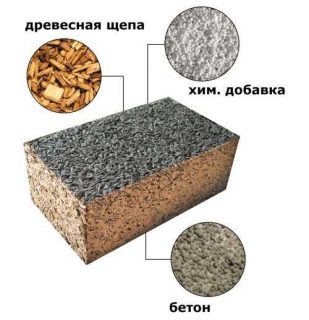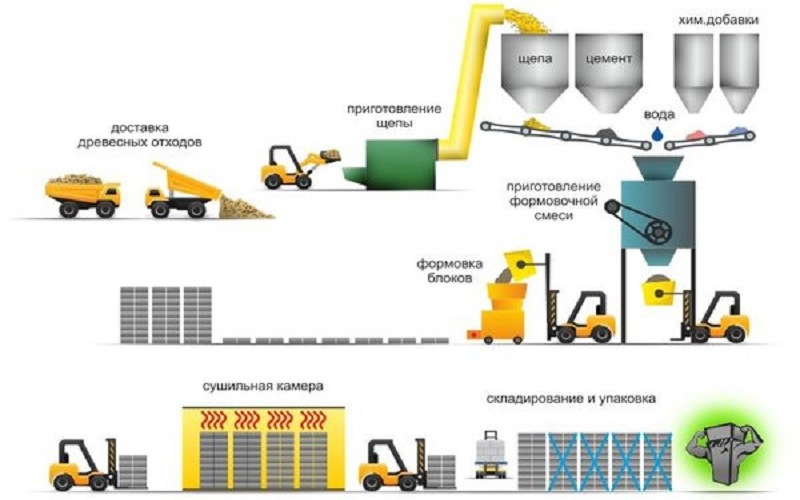Arbolit is a unique material that has been used for building houses abroad for over 100 years. Its characteristics and properties cause a lot of conflicting opinions about the quality and reliability of this material.
Technology, composition, characteristics
The wood concrete contains:
- concrete M400 or M500;
- chemical additive;
- organic filler.
The concrete must be of high strength. Used as a chemical additive aluminum sulfate, calcium chloride or water glass... Organic fillers include wood, shredded stalks of cotton, rice straw etc.
Depending on the production technology and the specific gravity of the components in the composition, the blocks can have different densities:
- less than 500 kg / m³ is used as a heat-insulating material, as well as for the construction of interior partitions;
- more than 500 kg / m³ are used for the construction of load-bearing structures.
Production technology wood concrete includes several stages:
- preparation the required amount of organic filler;
- wood soaking in calcium chloride;
- dosage of all constituents in the right proportion;
- making blocks.
The key characteristics of wood concretedistinguishing it from other building materials are considered thermal conductivity and moisture absorption.
The thermal conductivity of wood concrete directly depends on its density. Recommended wall thickness of wood concrete - 38 cm... But more often residential home walls are built from blocks of size 500x300x200 mm in one row... Taking into account the internal and external decoration of the walls of the house, this thickness is sufficient to ensure a comfortable temperature regime inside the room.
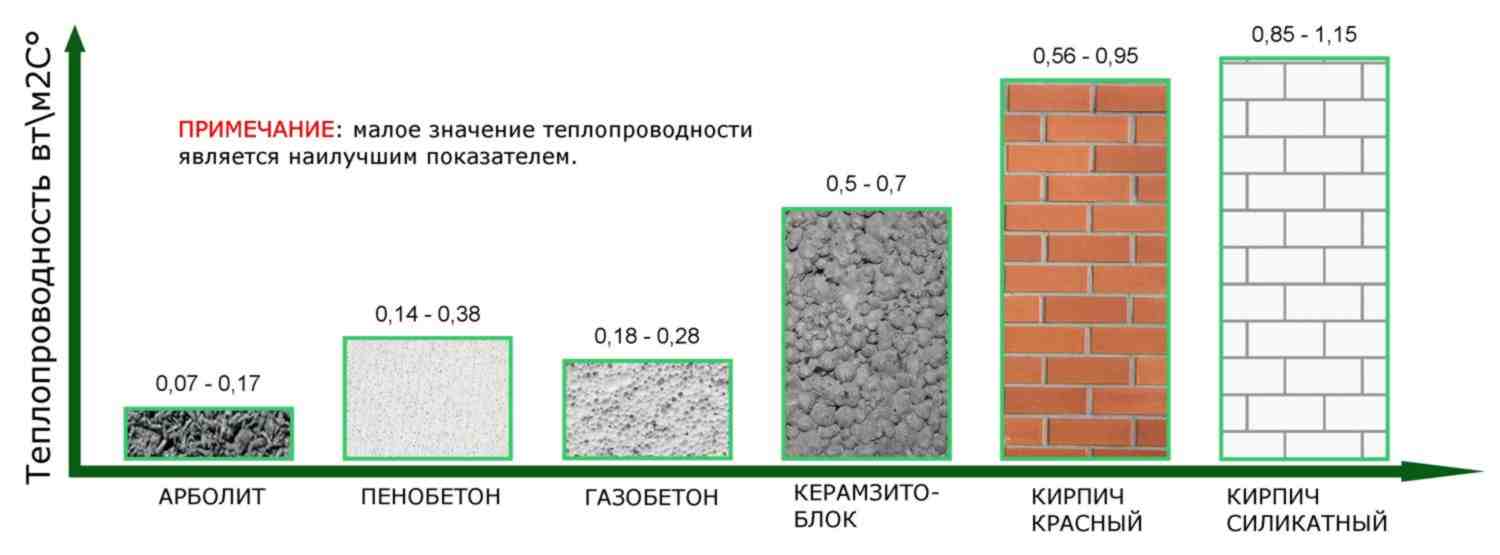
Moisture absorption wood concrete blocks is up to 85% for interior walls and up to 75% for structural walls... The material must be carefully waterproofed so that it does not lose its properties for a long time.
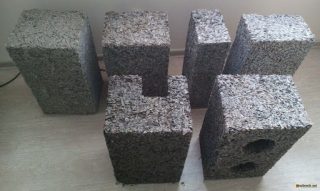
Arbolit combines in itself positive characteristics wood and stone.
- Weight of one cube is about 650 kg (for comparison, a brick cube weighs about 2 tons). The low weight of the walls allows you to save on the foundation of the house.
- Arbolit easy to cut, sawn and fasten... Blocks can be sawn with a hacksaw on wood, self-tapping screws can be screwed into them, nails can be driven in. They are easy to fit under masonry, technological openings.
- Arbolit - porous material, due to which the plaster, penetrating into the block, forms a monolith with it. However, if the blocks are treated with machine oil, it will not be possible to do without the facade plaster mesh.
- Material has unique bending strength... From a mechanical blow to the block, only a small dent remains. However, it is not recommended to build a building higher than a 2-3 storey building, and it is imperative to install a monolithic armored belt for a more uniform load on all walls around the perimeter of the building.
- Possesses the most high sound absorption coefficient from soft cellular materials for construction.
- Low thermal conductivity 0.12-0.19 W / (m ° C) allows you to build houses from wood concrete and in central Russia.
- Subject to construction technology and the use of high-quality blocks of the house serve for a very long time.
disadvantages wood concrete construction:
- On wood concrete blocks mold may appear, as with any other material, when creating the appropriate conditions for its formation. It is important to follow the rules of waterproofing and ventilation during construction.
- There are many factors that affect strength. It is important that the wood concrete was produced made of quality cement and possessed standard strength M25.
- Strong gusts of wind are felt through the wood concrete walls. Air permeability - this is one of the valuable qualities of this material. The problem is solved with high-quality vapor-permeable plaster.
- Arbolite walls require interior and exterior finishing... You can choose any finish to your taste. There are ready-made wood concrete blocks with external cladding on sale.
Calculation of the amount of wood concrete
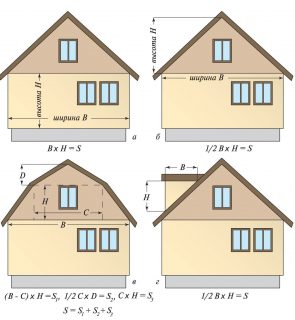
To estimate the cost of the material and the amount of work when building a house from wood concrete blocks, it is necessary to calculate the required number for construction. It is necessary to know the length and thickness of all load-bearing walls, interior partitions, the height of each floor, the quadrature of windows and doorways.
For calculation you can use the following method:
- Define perimeter of the house - the sum of the lengths of all walls.
- Determine the overall house height.
- Multiply general length on general the height.
- Subtract general area of window and door openings.
- Result multiply by the number of blocks for masonry 1 m² walls.
- Is added 1% stock.
For further calculation, you need to know the number of wood concrete blocks in a cube. Standard for load-bearing walls of 1 m³, 33.3 wood concrete blocks with dimensions of 500x300x200 mm are required... For the construction of interroom partitions more commonly used blocks of 500x150x200 mm in size - there are 66.6 pieces in 1 m³... When using wood concrete size 400x200x200 mm in 1 m³ there will be 62 blocks.
Wall erection process
When erecting walls made of wood concrete can be used stacking in one or two blocks... A standard binder is used as a binder. cement-sand mortar with the addition of perlite to increase the thermal insulation of the seams. Often, developers choose to connect wood concrete blocks aerated concrete adhesive.

Before laying the first row of blocks, it is necessary to carry out waterproofing in those places where the blocks will adjoin the foundation. Reinforce every 3-5 rows of blocks regular mesh.
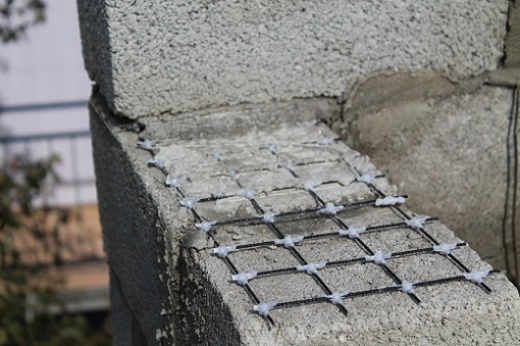
For the construction of window and door openings, you can use prefabricated bar, reinforced concrete, monolithic lintels, steel corners, channels and other profiles.
When laying blocks, a mortar with a strength of M50 - M100 should be used. The higher the strength of the mortar, the more likely it is to crack the joints.

